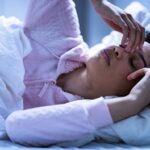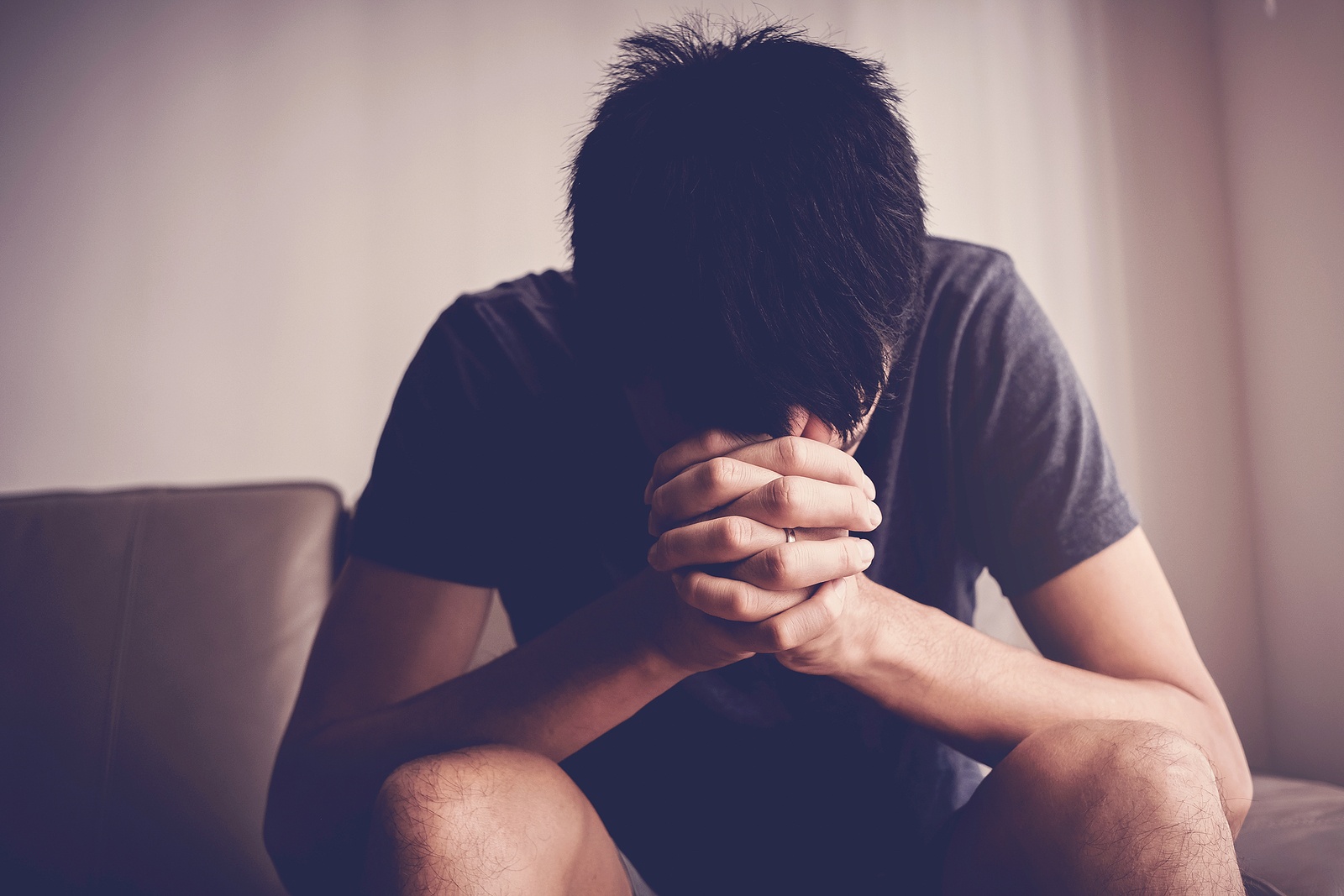Sleep Disorder Treatments
Read down and get to know various sleep disorder treatments. Sleep disorders affect millions of individuals worldwide, significantly impacting their quality of life, daily functioning, and overall health.
These disorders encompass a range of conditions, including insomnia, sleep apnea, restless leg syndrome, and narcolepsy, each presenting unique challenges and symptoms.
As awareness of the importance of quality sleep grows, so does the need for effective treatment options to address these issues.
The treatment of sleep disorders involves a comprehensive approach that may include lifestyle modifications, behavioral therapies, medications, and alternative remedies. The goal of these treatments is not only to improve sleep quality but also to enhance overall well-being, as sleep plays a crucial role in physical health, mental clarity, and emotional stability.
In recent years, advancements in sleep medicine have led to the development of innovative therapies and technologies designed to help individuals achieve restful, restorative sleep.
From cognitive-behavioral therapy for insomnia (CBT-I) to continuous positive airway pressure (CPAP) therapy for sleep apnea, various options cater to the specific needs of individuals suffering from sleep disturbances.
In this exploration of sleep disorder treatments, we will delve into the different types of sleep disorders, their underlying causes, and a variety of effective treatment strategies.
By understanding the available options, individuals can make informed decisions about their sleep health and work towards regaining the restorative sleep they deserve.
Healthy Sleep Habits
Improving your sleep habits is essential for enhancing your overall well-being and productivity. By taking proactive steps, you can cultivate a sleep environment and routine that supports restful nights and rejuvenated days. First and foremost, it’s crucial to allocate enough time for sleep.
Prioritizing adequate sleep can lead to increased happiness and productivity throughout the day, helping you feel more energized and focused.
To further enhance your sleep quality, consider implementing the following strategies:
- Create a Sleep-Friendly Environment: Transform your bedroom into a sanctuary for rest. Aim for a cool, quiet, and dark setting. Darkness signals to your body that it’s time to wind down, while a comfortable temperature promotes uninterrupted sleep. Additionally, avoid watching television or using electronic devices before bedtime. The blue light emitted by screens can interfere with your natural sleep-wake cycle, making it more difficult to fall asleep.
- Establish a Consistent Sleep Schedule: Try to go to bed and wake up at the same time each day, even on weekends. Consistency reinforces your body’s natural circadian rhythms, leading to better sleep quality. If possible, avoid night shifts or fluctuating schedules, as these can significantly disrupt your sleep patterns. While it may be challenging for new parents or those with demanding work schedules, finding ways to maintain a regular routine can yield significant benefits over time.
- Limit Stimulants and Alcohol: Be mindful of your consumption of caffeine, nicotine, and alcohol, especially in the hours leading up to bedtime. While alcohol might seem to help you fall asleep faster, it often leads to lighter sleep and increased awakenings throughout the night. Reducing or eliminating these substances can lead to more restful and restorative sleep.
- Engage in Regular Physical Activity: Incorporating regular exercise into your daily routine can significantly enhance your sleep quality. Aim for at least 30 minutes of physical activity during the day, but try to complete your workout at least five to six hours before bedtime. Exercising too close to bedtime can energize you and make it harder to fall asleep.
- Avoid Afternoon Naps: While napping can be beneficial for some, avoiding naps, particularly in the afternoon, may help you achieve longer, more restorative sleep at night. If you feel the need to nap, limit it to a short duration and avoid doing so too late in the day.
- Maintain a Regular Meal Schedule: Eating at consistent times throughout the day can help regulate your body’s internal clock. Avoid large meals close to bedtime, as they can cause discomfort and disrupt your sleep. Instead, opt for lighter evening snacks if needed.
- Limit Fluid Intake Before Bed: To minimize nighttime awakenings, reduce your fluid intake in the hours leading up to bedtime. This can help you enjoy longer, uninterrupted periods of sleep without frequent trips to the bathroom.
- Develop a Relaxing Bedtime Routine: Establishing a calming routine before bed can signal to your body that it’s time to wind down. Engage in relaxing activities such as reading, listening to soothing music, or taking a warm bath. Your healthcare provider may also recommend additional relaxation techniques, such as meditation, yoga, or massage therapy, to help you unwind.
- Consult with Your Healthcare Provider: If you suspect that certain over-the-counter or prescription medications are affecting your sleep, consult your healthcare provider. Some medications, including those for cold and allergy relief, can disrupt sleep patterns. Your provider may help you identify alternatives or adjustments to your current regimen.
By adopting these healthy sleep habits, you can create a more conducive environment for restful sleep, ultimately enhancing your physical and mental well-being. Prioritizing sleep is not merely a luxury; it’s a vital component of a healthy lifestyle.
Therapies for Sleep Disorders
Light Therapy
Light therapy is a treatment that involves sitting in front of a light box that emits bright light, mimicking natural sunlight. This therapy can also be delivered through light visors or glasses. The primary goal of light therapy is to help regulate your body’s melatonin production, which is crucial for resetting your sleep-wake cycle.
- Adjusting Sleep Times:
-
- To advance your sleep and wake times to an earlier schedule, use the light box upon waking in the morning. This exposure can also help reduce feelings of daytime sleepiness.
- Conversely, to delay your sleep and wake times, utilize the light box in the late afternoon or early evening. This approach can assist with conditions such as advanced sleep-wake phase disorder, shift work disorder, and jet lag when traveling west.
- Conditions Treated: Light therapy is particularly beneficial for individuals suffering from delayed sleep-wake phase disorder, irregular sleep-wake rhythm disorder, and jet lag.
- Potential Side Effects: While light therapy is generally safe, some individuals may experience side effects such as agitation, eye strain, headaches, migraines, or nausea. It is essential to consult your healthcare provider before starting light therapy, especially if you have any eye conditions or take medications that increase light sensitivity.
Orofacial Therapy
Orofacial therapy involves a series of exercises designed to strengthen the muscles in the mouth and face, which can be particularly beneficial for treating sleep apnea in both children and adults.
This therapy aims to improve tongue positioning and enhance the strength of the muscles controlling the lips, tongue, upper airway, and facial structure. Strengthening these muscles can aid in maintaining an open airway during sleep, thereby reducing the severity of sleep apnea symptoms.
Cognitive Behavioral Therapy for Insomnia (CBT-I)
Cognitive Behavioral Therapy for Insomnia (CBT-I) is a structured treatment plan lasting between six to eight weeks. It is recognized as the first-line treatment for chronic insomnia and has proven to be highly effective. CBT-I can be conducted by healthcare providers, nurses, or therapists, and it can take place in person, over the phone, or online. The therapy encompasses several components:
- Cognitive Therapy: This aspect helps reduce anxiety and stress associated with the inability to sleep, providing strategies to manage thoughts that contribute to insomnia.
- Relaxation and Meditation Techniques: These practices teach individuals how to relax their minds and bodies, facilitating a quicker transition to sleep.
- Sleep Education: Participants learn about healthy sleep habits and the importance of sleep hygiene, which are crucial for improving overall sleep quality.
- Sleep Restriction Therapy: This involves limiting the time spent in bed to a specific window, even if sleep does not occur immediately. Gradually, this method helps improve the quality of sleep, allowing for increased time in bed as sleep becomes more consistent.
- Stimulus Control Therapy: This technique reinforces the connection between the bedroom and sleep. It encourages individuals to go to bed only when feeling sleepy, get out of bed if unable to sleep, and use the bed solely for sleep and sexual activity. This helps establish a regular sleep-wake cycle and conditions the mind to associate the bed with sleep.
By incorporating these therapies into your routine, you can effectively address various sleep disorders, enhance your sleep quality, and improve your overall well-being.
Medications for Sleep Disorders
If you’re struggling to fall asleep or stay asleep and have found that improving your sleep habits and trying other therapies have not yielded results, your healthcare provider may discuss medication options with you.
While these medications can be effective in promoting sleep, it’s important to understand that many come with side effects and should generally not be used long-term.
Prescription Medications
Some prescription medications designed for other health conditions can inadvertently increase your risk of developing sleep disorders. Here are a few types of sleep medications:
- Benzodiazepine Receptor Agonists: These include medications like zolpidem, zaleplon, and eszopiclone. While they can be effective for sleep, side effects may include increased anxiety, dizziness, and confusion. Rarely, users may experience severe allergic reactions or engage in activities while asleep, such as walking, eating, or even driving, without recollection.
- Melatonin Receptor Agonists: An example is ramelteon. Side effects can include dizziness and fatigue. Similar to benzodiazepine receptor agonists, some users may engage in sleep-related activities while unconscious or experience severe allergic reactions.
- Orexin Receptor Antagonists: Medications like suvorexant belong to this category and are generally not recommended for individuals with narcolepsy. Rare side effects can include engaging in activities while asleep or experiencing temporary paralysis when falling asleep or waking up.
- Benzodiazepines: If other treatments have proven ineffective, benzodiazepines may be prescribed for insomnia. However, it’s crucial to discuss potential side effects with your healthcare provider, as these can include dizziness, confusion, and muscle weakness. Additionally, benzodiazepines may interact dangerously with other medications and are habit-forming, necessitating careful monitoring and limiting use to just a few weeks.
Off-Label Medications
In some instances, healthcare providers may prescribe medications that are typically used for other health issues but are not specifically approved by the U.S.
Food and Drug Administration (FDA) for treating insomnia. These can include certain antidepressants, antipsychotics, and anticonvulsants. Discuss with your provider whether these options are suitable for your situation.
Over-the-Counter (OTC) Medications and Supplements
It’s essential to inform your healthcare provider about any over-the-counter products you are currently taking.
- OTC Sleep Aids: Many OTC products that contain antihistamines are marketed as sleep aids. While these may induce drowsiness, they can pose safety risks for certain individuals. Always consult your healthcare provider before using these products.
- Melatonin Supplements: These are synthetic versions of the natural sleep hormone melatonin and are widely used to improve sleep quality. However, melatonin supplements are not regulated by the FDA like conventional medications, which means the dosage and purity can vary significantly between brands. It’s important to consult with your provider to find safe and effective melatonin supplements and to discuss potential side effects or interactions with other medications, especially if you are pregnant or planning to conceive. Common side effects of melatonin can include excessive daytime sleepiness, headaches, fluctuations in blood pressure, gastrointestinal issues, and exacerbation of depressive symptoms.
- Dietary Supplements: While some dietary supplements may promote better sleep, they can also carry health risks. Always discuss with your healthcare provider before incorporating any dietary supplements into your regimen.
By exploring these medication options and maintaining open communication with your healthcare provider, you can work toward finding a suitable solution for your sleep challenges.
Medications to Help You Stay Awake
For individuals dealing with sleep disorders like narcolepsy, medication may be necessary to promote wakefulness during the day. While some people may use caffeine as a temporary solution, others may require prescription medications to effectively manage their symptoms.
- Stimulants: Also known as wakefulness-promoting agents, these medications can enhance daytime alertness. However, their effects may be short-lived, and individuals may still experience some degree of sleepiness throughout the day.
- Depressants: Medications such as sodium oxybate are designed to address daytime sleepiness and cataplexy, which is characterized by sudden loss of voluntary muscle control. Possible side effects of these medications can include bedwetting, headaches, and dizziness.
Devices for Sleep Management
Continuous Positive Airway Pressure (CPAP)
The CPAP machine is a vital device used for individuals with sleep apnea. It utilizes mild air pressure to keep the airways open during sleep. The system typically consists of:
- A mask: This fits over the nose or both the nose and mouth, secured with straps.
- A tube: Connecting the mask to the machine’s motor.
- A motor: Blowing air into the tube to maintain a steady flow.
To achieve optimal results, it’s essential to use the CPAP machine every time you sleep, including during naps. Travelers should also carry their CPAP equipment. Although it may take some time to adjust to using a CPAP machine, it is crucial for effective treatment.
Oral Devices
Oral devices are alternatives for managing sleep apnea, particularly for those who may not tolerate CPAP. These custom-made devices, typically created by a dentist or orthodontist, help maintain an open airway by positioning the jaw or tongue correctly.
An oral device may be recommended if you have mild sleep apnea or if your apnea occurs primarily when sleeping on your back.
There are two main types of oral devices:
- Mandibular Advancement Devices (MADs): These devices cover both the upper and lower teeth, positioning the jaw to prevent airway blockage.
- Tongue Retaining Devices: These mouthpieces hold the tongue in a forward position, preventing it from obstructing the airway.
A recently FDA-approved oral device can also be worn while awake. This device utilizes electrical muscle stimulation through a removable mouthpiece that fits around the tongue. Wearing the mouthpiece for 20 minutes a day over six weeks strengthens the tongue muscle, reducing the risk of airway obstruction during sleep.
Your dentist or orthodontist will ensure the device fits comfortably and provide guidance on how to use it for optimal effectiveness.
Surgical Procedures
If CPAP and oral devices fail to alleviate symptoms, surgical options may be considered for treating sleep apnea. Some procedures include:
- Adenotonsillectomy: This surgery involves the removal of the tonsils and adenoids, which can block the airway.
- Implantation Surgery: This type of surgery places an implant that helps monitor breathing patterns and controls muscles that keep the airways open. Nerve stimulators may also be utilized to help manage tongue muscle function during sleep, preventing airway obstruction.
- Soft Tissue Removal: Surgery to excise excess soft tissue from the mouth and throat can help enlarge the upper airway.
- Maxillary or Jaw Advancement Surgery: This procedure involves repositioning the upper jaw (maxilla) and lower jaw (mandible) to expand the upper airway, thereby improving airflow during sleep.
In conclusion, various medications and devices are available to manage sleep disorders effectively. Consulting with a healthcare provider will help determine the most appropriate treatment options based on individual needs and circumstances.
Health Benefits of Blueberries
How To Lose Weight Without Counting Calories
Yoga Exercises For Weight Loss

A graduate of Computer Science and Information Management Technology. Diploma – Caregiving, Certificates – Dementia and Diabetes Awareness and Management. A researcher, blogger, songwriter, singer and acoustic guitarist. Born in an environment where natural talents such as healing are imparted at our natural birth. This natural talents of healing is the result of our genetic inheritance and the training from family environment.













